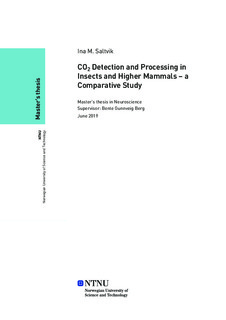| dc.description.abstract | Carbon dioxide (CO2) is a gas abundant in Earth’s atmosphere, and being a product of cellular respiration, it is present in concentration gradients around respiring organisms and organic decay. The atmospheric CO2 concentration has risen steadily since the industrial revolution, and its present level is historically unsurpassed. Carbon dioxide also constitutes a powerful chemosensory signal to animal systems that have developed the ability to detect it. Fluctuations in external CO2 levels can prompt disparate behaviours in different organisms, dependent on the species, ecological niche, and context. Modern molecular biology has offered new insight into how CO2 is detected by sensory organs, yet it is not known how the general rise in CO2 will affect animals that use this gas as an environmental cue. The present text explores the putative vulnerability of these organisms to the rising CO2 concentration by comparatively reviewing the chemosensory mechanisms of CO2 detection in insects and higher mammals, from the detection organs, via central nervous pathways, to the possible behavioural implications. Recent reports about several insect species declining in numbers, has brought about a sense of urgency in learning more about them, as they are vastly relevant to all terrestrial ecosystems due to their role as pollinators, decomposers, and as food to other animals. It is therefore of unreserved importance to investigate the effects of external CO2 levels on insects. | |
